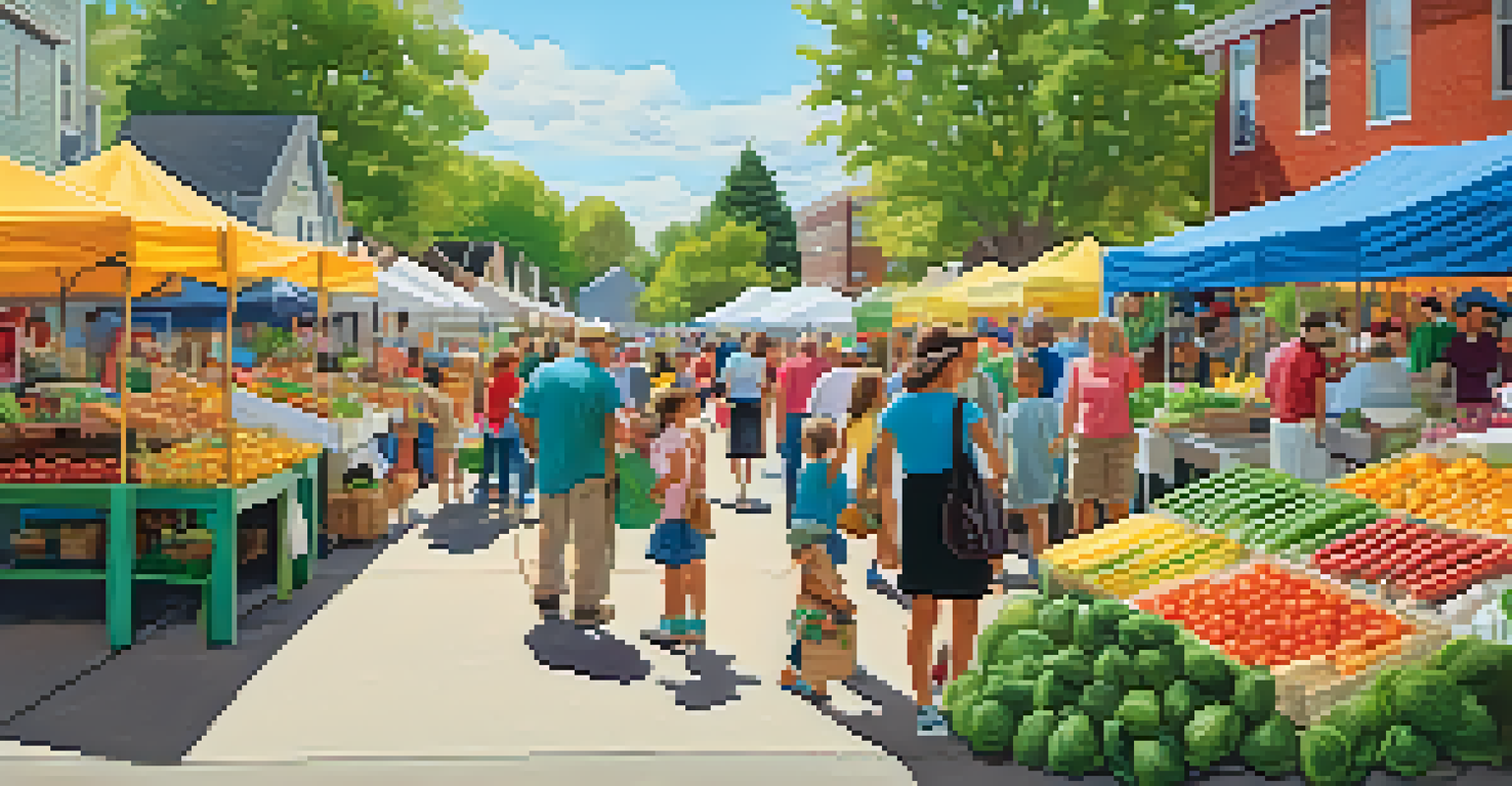The Rise of Suburban Living: NYC Residents Seek Space

The Shift in Urban Living: Why Space Matters
In recent years, the appeal of city living has faced a significant challenge: the need for space. As more New Yorkers find themselves working from home, the cramped apartments that once felt cozy now feel restrictive. This shift has led many to reconsider their living arrangements, prioritizing room for home offices, children's play areas, and even outdoor spaces.
The best thing about the suburbs is that they offer the space to breathe and grow, both literally and figuratively.
The pandemic accelerated this trend, prompting a mass exodus from urban centers to suburban neighborhoods. Families, in particular, are seeking larger homes where they can spread out and find some semblance of normalcy. With the rise of remote work, the traditional ties to city jobs are loosening, allowing people to explore housing options beyond the concrete jungle.
Moreover, the allure of a backyard, parks, and lower density living is hard to resist. Suburban areas offer a lifestyle that combines accessibility to nature with the comforts of home, making them increasingly attractive for city dwellers longing for a change.
The Impact of Remote Work on Housing Choices
The rise of remote work has transformed the way people view their homes. No longer just a place to sleep, homes have become multifunctional spaces that accommodate both work and leisure. With this shift, many New Yorkers are re-evaluating their living situations, leading to a surge in demand for suburban properties.

Companies have embraced flexible work arrangements, which means employees aren’t tethered to metropolitan job locations. This newfound freedom allows them to search for homes that better suit their lifestyle needs, often leading them to areas with more space and lower housing costs. The suburban dream, once seen as a distant aspiration, is now within reach for many.
Space Needs Drive Suburban Move
As remote work becomes the norm, many city dwellers are prioritizing spacious living arrangements, leading to an exodus to suburban neighborhoods.
As a result, suburban real estate markets are experiencing a boom, with families eager to secure homes that offer more than just a roof over their heads. This trend is reshaping the landscape of housing, encouraging developers to focus on creating spacious, family-friendly communities.
Affordability: The Driving Force Behind the Move
Affordability has become a significant factor in the decision to leave the city. With rising rent prices in New York City, many residents are finding it increasingly challenging to maintain their lifestyles without breaking the bank. Suburban living often presents a more budget-friendly alternative, allowing families to purchase larger homes at a fraction of the cost.
Home is not a place, it's a feeling. And sometimes, that feeling is found in a backyard under the sun.
The financial savings extend beyond just the price of homes. Suburbs typically offer lower property taxes and a higher quality of life with access to good schools and community amenities. For families looking to invest in their future, the suburbs can provide a more sustainable financial path.
This shift towards affordability is reshaping the demographics of suburban neighborhoods. As more city dwellers move out, these areas are becoming vibrant communities filled with new families, bringing fresh energy and ideas to the local culture.
Family Dynamics: Seeking a Kid-Friendly Environment
For many families, the decision to move to the suburbs is heavily influenced by the need for a kid-friendly environment. Parents are increasingly prioritizing neighborhoods that offer good schools, safe parks, and a sense of community. Suburban areas often provide these essential elements, making them an ideal choice for raising children.
The availability of outdoor spaces and recreational facilities is a significant draw. Children can enjoy playing outside, riding bikes, and making friends in a safe, open environment—something that is harder to come by in the bustling city. This connection to nature and community is invaluable for families striving to create a balanced lifestyle.
Affordability Fuels Housing Shift
Rising rent prices in urban areas are prompting families to seek more affordable housing options in the suburbs, where they can enjoy larger homes at lower costs.
As families settle into suburban life, they often find themselves becoming more involved in community activities and local events. This engagement fosters a sense of belonging and connection that can be more challenging to achieve in the fast-paced city environment.
Lifestyle Changes: Embracing a New Way of Living
Moving to the suburbs isn’t just about finding a bigger home; it's about embracing a different lifestyle. Residents are discovering the joys of slower-paced living, where they can enjoy quiet evenings on the porch or weekend hikes in nature. This lifestyle shift is appealing to those seeking a break from the hustle and bustle of city life.
Suburban living often encourages stronger relationships with neighbors, as families spend more time outdoors and engage in community events. This sense of camaraderie can lead to lifelong friendships and a more supportive environment for families.
Moreover, many suburbs are investing in local amenities like farmers' markets, boutique shops, and outdoor dining options. These developments enhance the overall quality of life, making suburban areas not just places to live, but vibrant communities where people can thrive.
Challenges of Suburban Living: Adjusting to Change
Despite the many benefits of suburban living, there are challenges that come with this transition. For some city dwellers, the move can feel isolating, especially if they are used to the constant buzz of urban life. Adjusting to a quieter environment takes time, and some may struggle with feelings of loneliness.
Transportation can also pose a challenge. While suburbs often provide ample parking and access to highways, public transportation options are usually more limited than in the city. This can make commuting to work or enjoying a night out more complicated for those who rely on public transit.
Family-Friendly Communities Appeal
Parents are increasingly drawn to suburban neighborhoods that offer safe environments, good schools, and outdoor spaces for their children to thrive.
However, many new suburban residents are finding creative solutions to these issues, such as carpooling or using rideshare services. Over time, as they build connections in their new communities, the initial challenges often give way to a fulfilling suburban lifestyle.
The Future of Suburban Living: A Lasting Trend?
As we look ahead, it’s clear that the trend towards suburban living is more than just a temporary shift. With remote work likely to remain a significant part of the employment landscape, many are rethinking their long-term housing strategies. This could result in a permanent transformation of population distribution, with suburbs becoming increasingly populated.
Additionally, as more residents settle into suburban areas, local economies are expected to flourish. The influx of new families can lead to increased demand for services, schools, and businesses, ultimately enhancing the quality of life for everyone in the community.

In conclusion, the rise of suburban living among NYC residents is a multifaceted phenomenon driven by the quest for space, affordability, and a family-friendly lifestyle. Whether this trend will solidify into a lasting change remains to be seen, but it certainly reflects broader shifts in how we view our homes and communities.